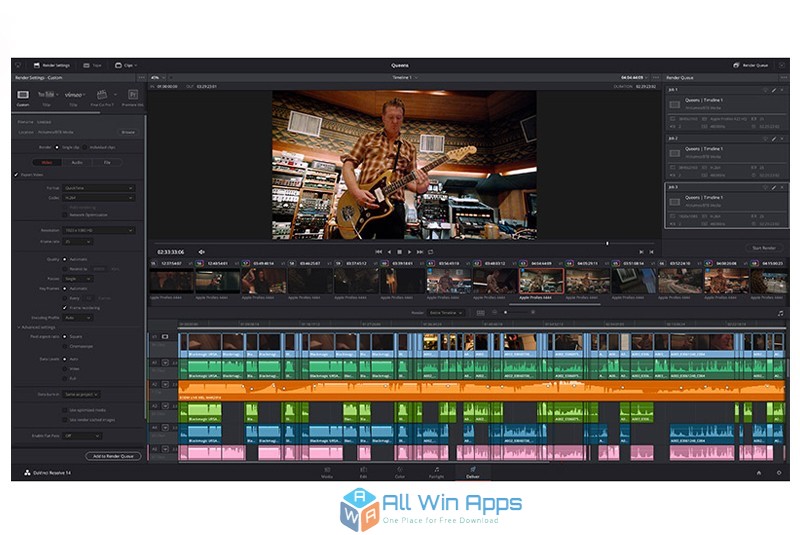

- #Davinci resolve free system requirements driver#
- #Davinci resolve free system requirements pro#
- #Davinci resolve free system requirements software#
NVIDIA/AMD/Intel GPU Driver version – As required by your GPU Integrated GPU or discrete GPU with at least 2GB of VRAM 32 GB when using Fusionīlackmagic Design Desktop Video 10.4.1 or later Integrated GPU or discrete GPU with at least 2GB of VRAM.ġ6 GB of system memory. 16 GB when using Fusionīlackmagic Design Desktop Video version 12.0 or later Minimum system requirements For Mac.Ĩ GB of system memory. Lastly while DaVinci Resolve is free, it does have some system requirements you should meet before trying it.
#Davinci resolve free system requirements software#
The first key frame, (highlighted with a dot) is the starting position and then the second dot represents where we would like the finishing position to be, the software ensures a smooth transition between the start and finishing points.Īll in all, there aren’t many free alternatives that offer the same range of video editing tools as Davinci Resolve does, although windows have a bare bones video editor built in if all you’re doing is adding clips together. If you use the adjustments mentioned above the result would be the video panning into shot from the left. The software will recognise the changes between the two highlighted frames and will adjust to the latest.

In the second you can reset the positional attributes. The first modified frame can be moved completely off the screen to the left. If you choose a further frame and adjust an attribute, such as the position. Key frames in the simplest terms are highlighted frames in a clip where certain attributes can be adjusted. Media – Cut – Edit – Fusion – Colour – Fairlight – Deliver – DaVinci Resolve’s Workshop selection. The final stage and is where all of the saving, exporting and formatting tools are for when you have finished your project and are looking to share it with the world! The music section of DaVinci and is where all of the audio controls are and is where you can fine tune and add music, sound effects and everything that’s audio. Your one stop shop to all colour adjustments, this tab arranges all of the colour grading tools and makes it as easy as possible to adjust the colour of your clips. On top of this the Fusion tab also contains tools for editing 3 dimensional items into your footage. Each node represents an effect such as blur, texts and backgrounds. Where the more advanced editing tools are or nodes in this case.

Where you can edit, add transitions and is where I add keyframes to my clips. Where you can insert your clips and trim them to length to ensure your clips are all in the timeline for editing which is the next step. Where you insert the clips you want to use.Ī handy shortcut for inserting clips is Ctrl + I. Media – Cut – Edit – Fusion – Colour – Fairlight – Deliver Media This video showcases each workspace section as well as example of keyframes in DaVinci Resolve. These work by changing the interface to suit each stage of editing, I’ll go through them and explain each stage. DaVinci breaks editing into 6 main steps with an icon bar at the bottom, these include edit, deliver, colour, music and others.
#Davinci resolve free system requirements pro#
There are a few alternatives these include Sony’s Vegas software, Apple’s exclusive Final Cut Pro and the main focus for this blog, DaVinci Resolve.ĭaVinci Resolve is free! And is largely similar to Resolve Studio which is used for colour grading in industry. Finding editing software that isn’t Adobe can be tricky.


 0 kommentar(er)
0 kommentar(er)
